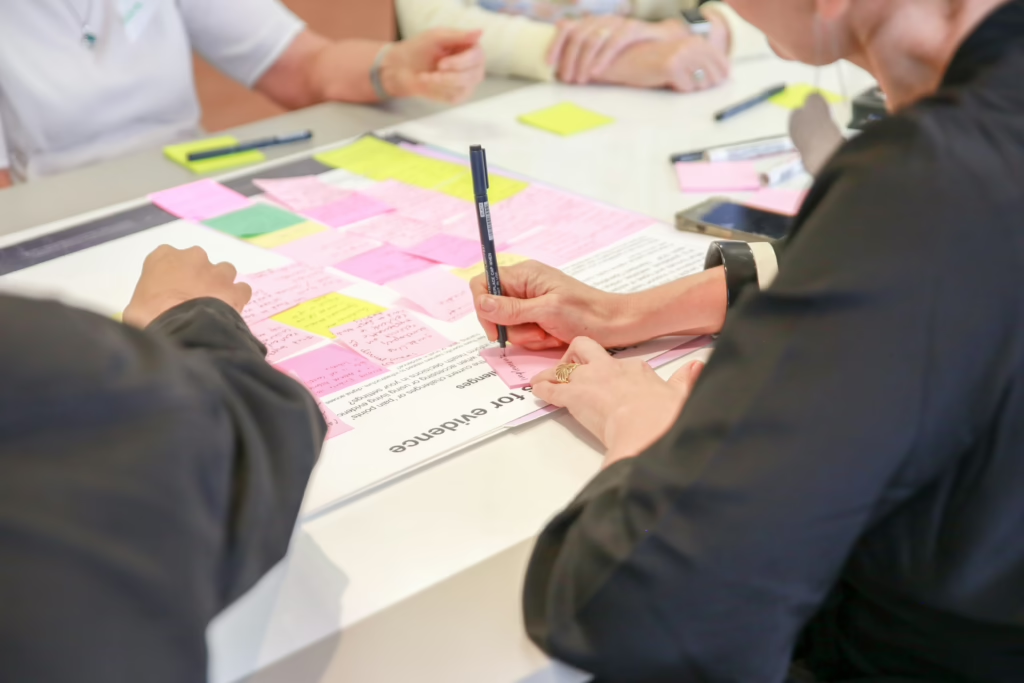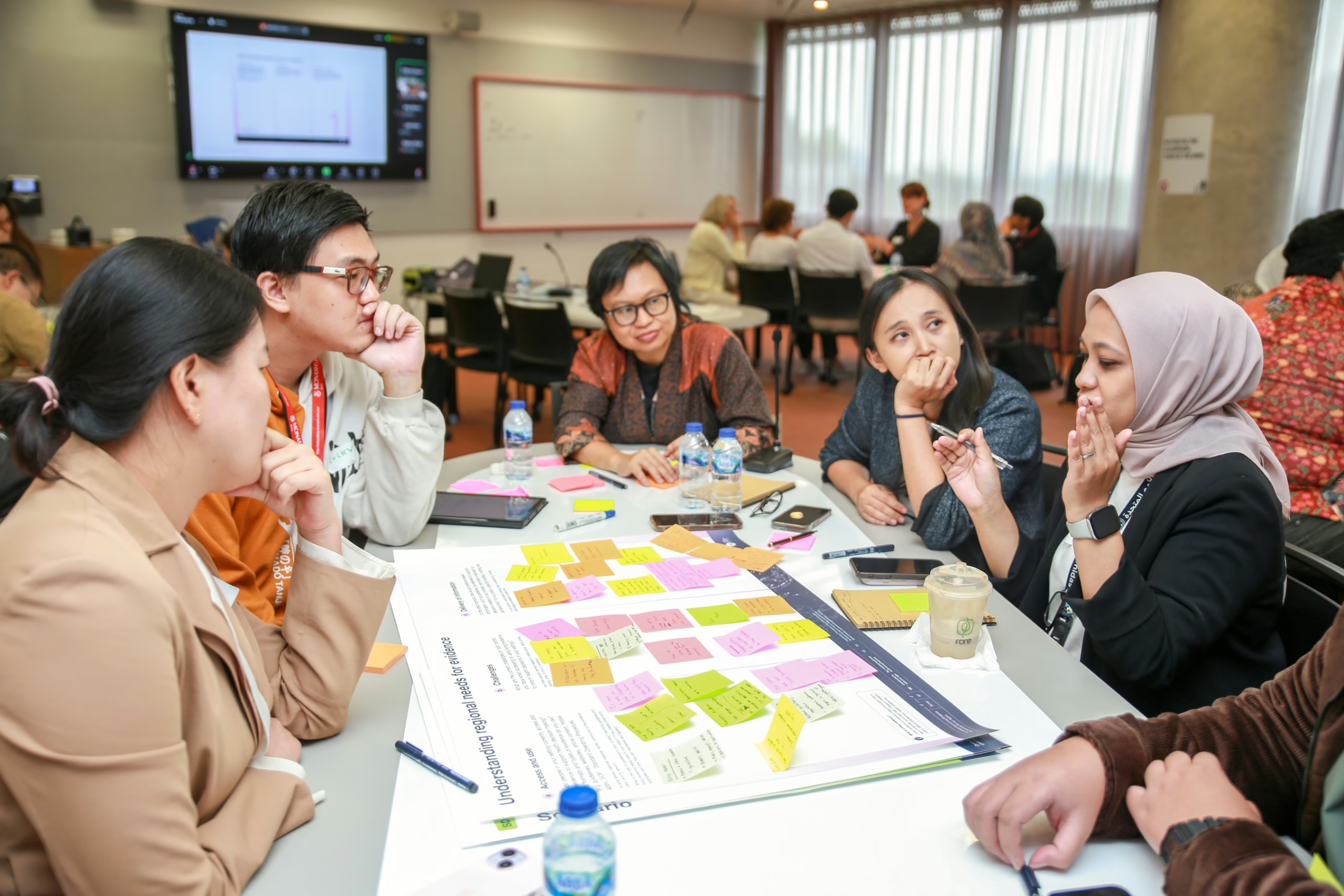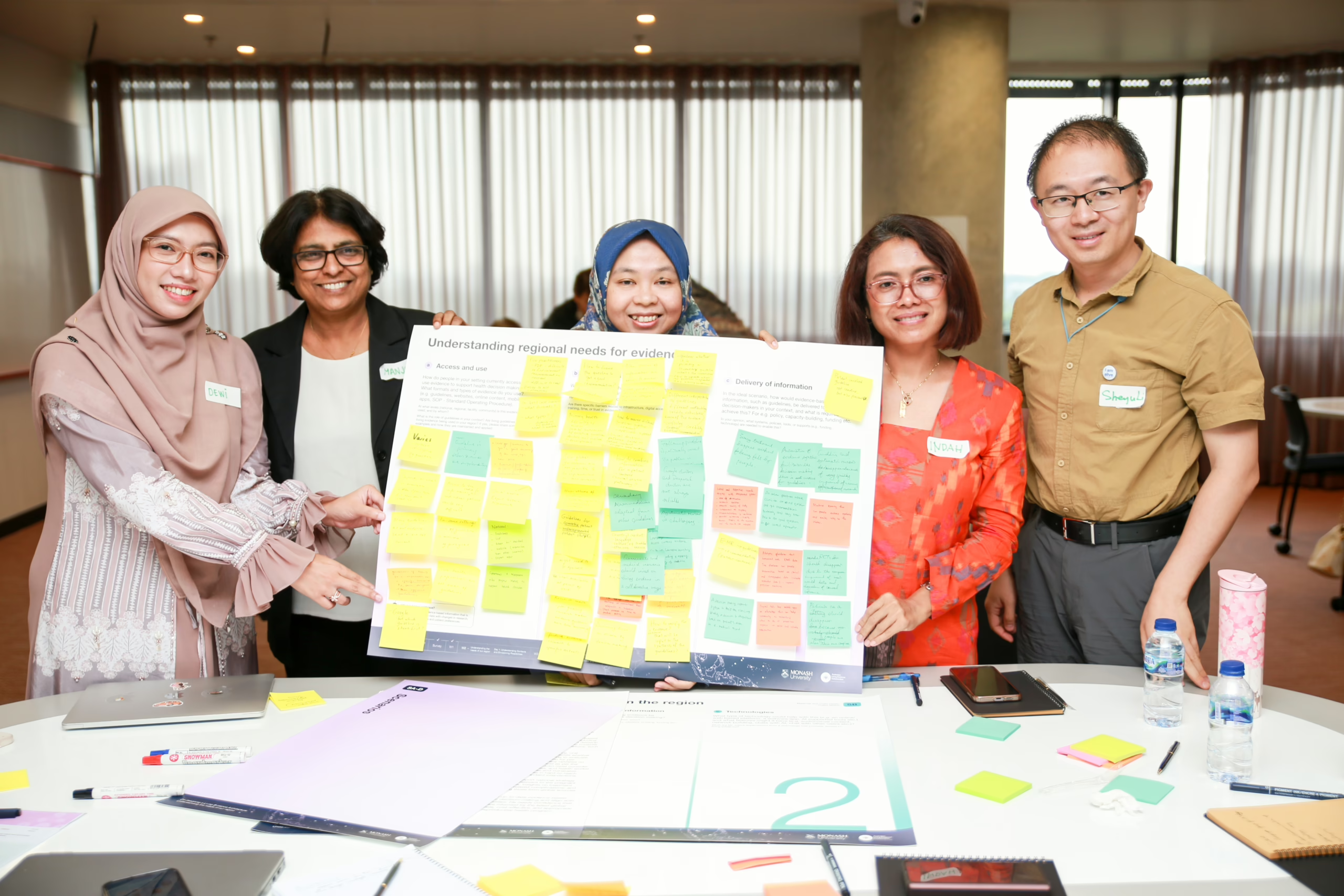
The two-day regional workshop in Jakarta began with warm introductions and greetings from each of the 36 participants and 15 team members.
Selamat pagi! Good morning!
Magandang umaga! G’day! Hola! Ni Hao! Kia Ora Tātou! Sawasdee kha! Annyeong Haseyo!
Sudah makan?
Dr Jane Jacobs, VP of Research at Monash Indonesia, opened the workshop with an account of Monash Indonesia’s rapid accomplishments, establishing itself as a vital part of the region’s conversations on both public health and research from 2021 until now. Dr Jacobs explained that the University is excited to be part of designing a Global Living Evidence Architecture and looking forward to tackling the challenges alongside others in the living evidence community.
Professor Tari Turner then highlighted the overarching goal of living evidence: to address the global need for up-to-date evidence to inform decision making. Integral to this goal being listening to the voices of our region, which comprises 48 countries and over 4 billion people.

After a lunch break Professor Lisa Askie, Methods Lead, Quality Norms and Standards at the World Health Organization, began session three with an overview of guideline development, emphasising that while ‘living guidelines’ are the most effective at delivering credible information to decision makers, not all recommendations within a guideline need to be ‘living’ in order to be up-to-date. Precious resources can be directed to the proactive, dynamic updating of only the recommendations that require it. The infrastructure around dissemination, implementation and evaluation can then flow on from this starting point.
An insightful look into the region’s needs and priorities for living evidence was presented by Dr Manju Rani, Regional Advisor of Research and Innovation for the South East Asia Regional Office of the World Health Organization. Dr Rani provided a deeper understanding of the contextual considerations when it comes to living evidence synthesis and implementation.
Our third speaker, Dr Sunju Lee, spoke on the cyclical nature of evidence, policy and practice. Dr Lee, Technical Advisor for the Data, Strategy and Innovation Division of the WHO’s Regional Office for the Western Pacific, explored how evidence turns into national guidelines, relaying stories of how evidence translates, and sometimes doesn’t translate, into practice.
Professor Indah Widyahening from the Faculty of Medicine Universitas Indonesia was our final speaker for the session, giving an insightful, in-depth analysis of national clinical practice guidelines in Indonesia.
The next session was a thought-provoking co-design activity around how to support evidence-based health decision making in the region. The attendees ideated on tools that could automate, personalise and enhance the user experience for particular scenarios. Day one ended with an optimistic view of what the future could hold.

Associate Professor Grace Wangge, from Monash Indonesia opened the morning and participants recounted their key takeaways from the day before. It quickly became apparent that this group of people were invested in the future of living evidence and living guidelines, focussed on patient-centred care, and looking forward to overcoming the challenges.
The final co-design activity delved deeper into the possibilities of a technology supported platform for the region, envisioning features that could solve particular problems and give health professionals and policy-makers the technology platform that they need.
As the workshop drew to a close, Professor Turner asked the attendees what other questions we should be asking and who else needs to be part of the conversation. Among the energising responses ran an undercurrent that this is a catalyst to bigger things. It became clear that there were many more people that are integral to the conversation about developing a global living evidence architecture, and that our region is full of skilled, enthusiastic people ready to get to work.
Find out more about the GLEA project